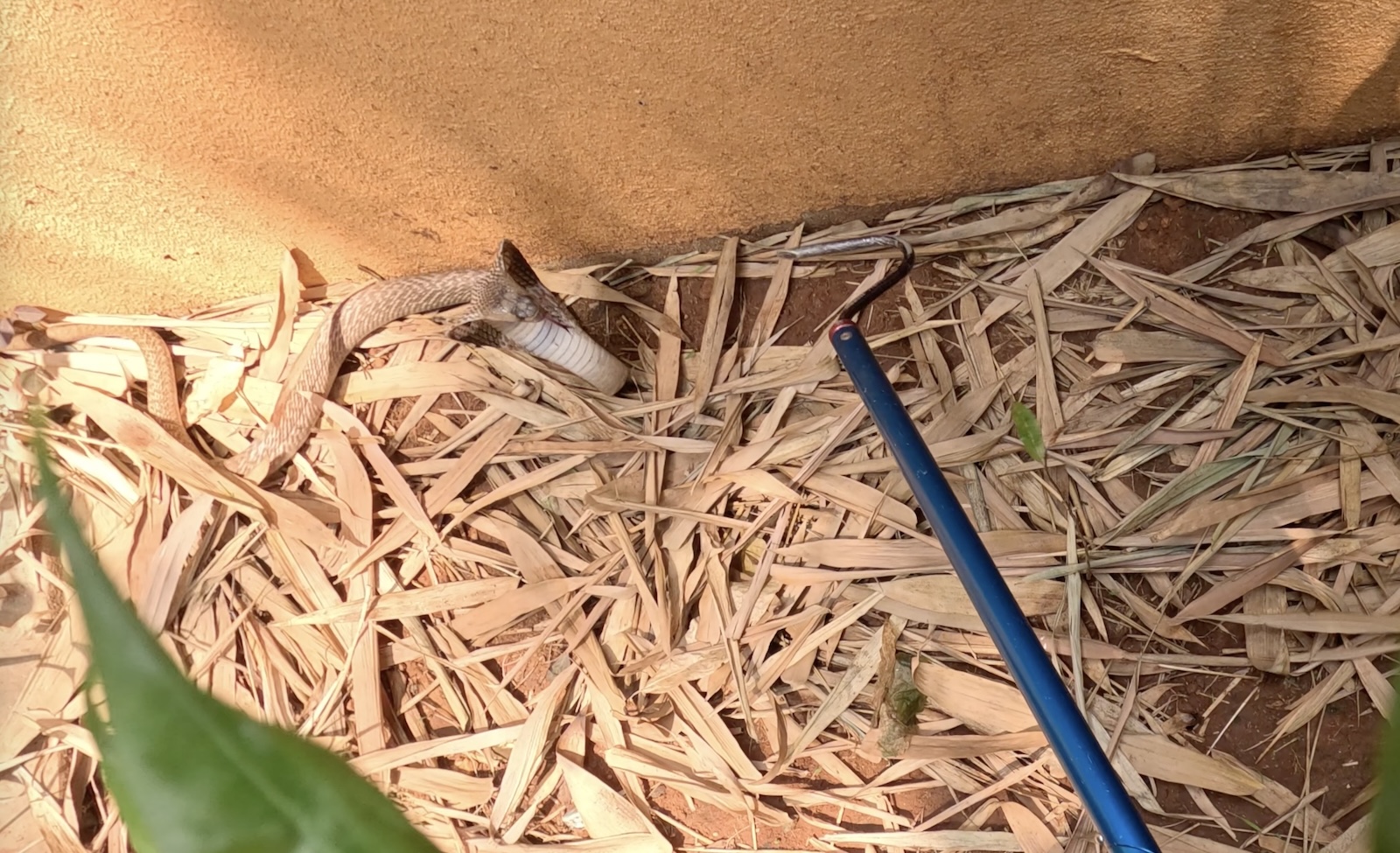When the call came in about a rat snake tangled in a net, it was yet another reminder of how human activities often unintentionally harm wildlife. While the rescue itself was straightforward, it demanded patience and precision, as nets can easily injure or even kill a snake if handled carelessly. After carefully cutting the snake free, we witnessed a quiet, graceful release as it slithered back into its natural habitat, reclaiming its freedom.
Though non-venomous snakes like rat snakes are often overlooked and rarely warrant rescue calls, situations like this highlight the importance of intervening. Nets, plastic waste, and other human-made hazards can become death traps for these creatures, underscoring the need for awareness and compassion. As rescuers, we tirelessly work to save animals that suffer due to our own lack of understanding or consideration for other species. Each rescue is a small step toward fostering coexistence and reminding ourselves of the impact we have on the natural world.
Rescues like this serve as a poignant reminder of the unintended consequences of human actions and the importance of working tirelessly to mitigate them. Every life saved, no matter how small or seemingly insignificant, contributes to the broader effort of preserving the delicate harmony of our shared environment.
Rat snake fast facts
- Non-venomous: Rat snakes are completely harmless to humans, relying on constriction to subdue their prey rather than venom.
- Distribution: Found across a wide range, including North America, Europe, and Asia, they adapt to diverse habitats such as forests, grasslands, farmlands, and even urban areas.
- Appearance: They vary in color and pattern depending on the species and region, but most have smooth scales and a slender, elongated body. They can grow up to 4-6 feet in length.
- Behavior: Rat snakes are excellent climbers and swimmers, often seen scaling trees or swimming through water. They are generally docile but may vibrate their tails as a defensive mimicry of rattlesnakes.
- Diet: As their name suggests, they primarily feed on rodents, making them invaluable for natural pest control. They also consume birds, eggs, and small amphibians.
- Reproduction: Rat snakes are oviparous, laying eggs in clutches of 5-30. The eggs hatch after about two months, and the young are independent from birth.
- Lifespan: In the wild, they can live up to 10-15 years, though some individuals in captivity have lived longer.
- Ecological Role: By controlling rodent populations, rat snakes play a crucial role in maintaining the balance of ecosystems and reducing the spread of diseases carried by pests.
Rescue date: 4th October 2024.
For more such interesting facts and rescues by me, do subscribe to our newsletter now.





One Comment